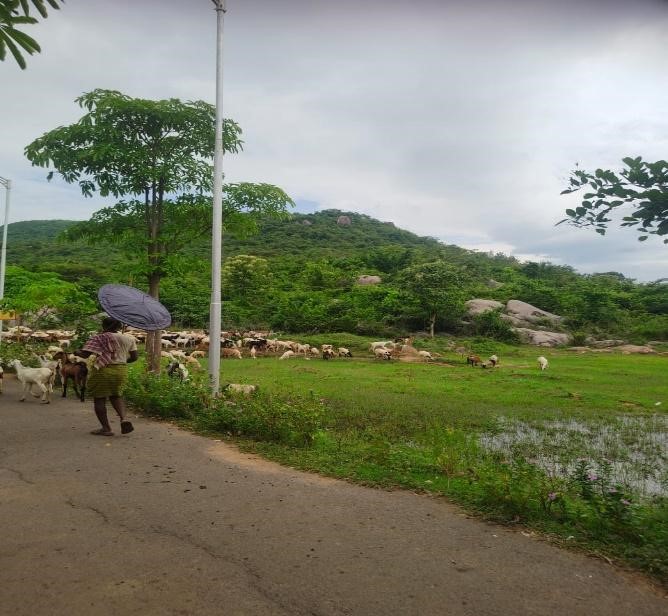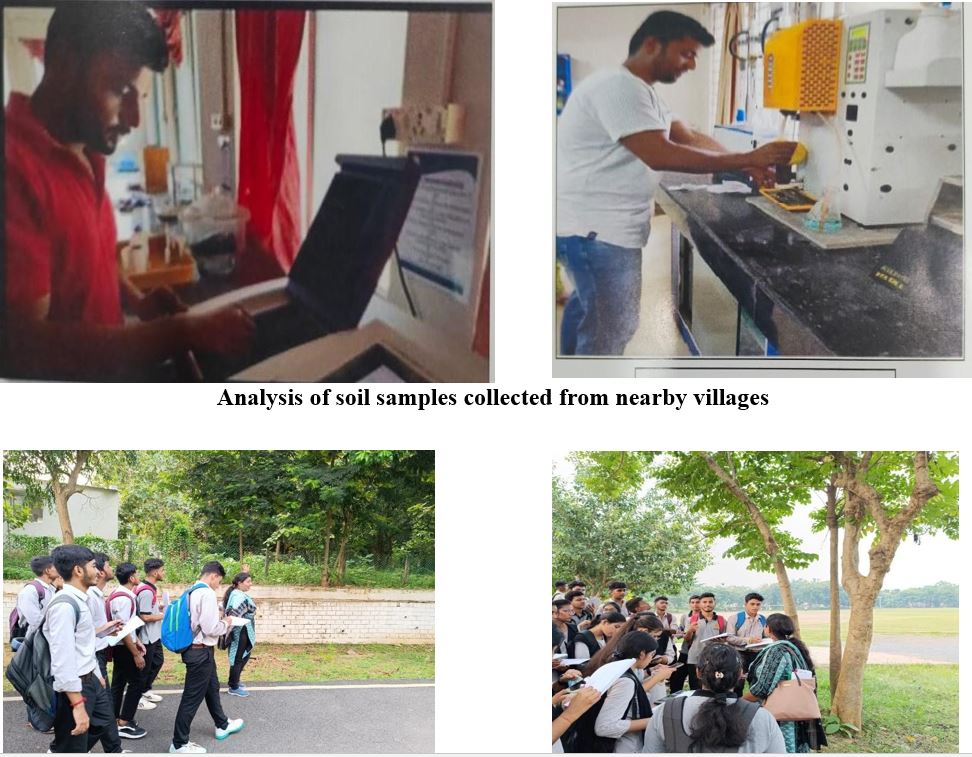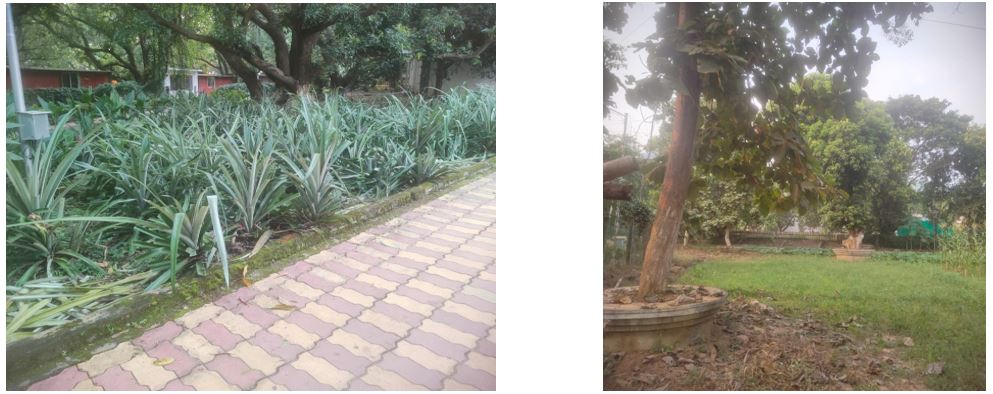Land sharing with the Local Communities
Collaboration between Centurion University and local villages like Bagushala, Totagumuda, and Rasur in managing shared land ecosystems such as pastoral grazing lands, ponds, and water resources is crucial for fostering sustainable development and harmonious coexistence. This collaboration involves mutual agreements and practices that benefit both the university and the communities.
Centurion University has implemented various measures to enhance the quality and availability of grazing like soil management, water management, improved forage species, monitoring and assessment of lands in response to factors like human activities, overgrazing, climate variability, and shrinking pasturelands due to expanding cultivation and urbanisation, as highlighted in the UNCCD Science-Policy Interface report on Sustainable Land Management (SLM).

Millets cultivation by the tribes:
In the tribal village, minor millets like khatta saga and badbadi play a crucial role in the local agriculture and food security. These crops are resilient and well-adapted to the region’s climatic conditions, making them essential for sustaining the community. This millet variety is known for its tart flavor and is often used in traditional dishes. It is rich in nutrients and serves as a staple during lean seasons. Another important millet, badbadi is valued for its drought resistance and ability to thrive in poor soil conditions. It is commonly used to make porridge and other local recipes. These are primarily cultivated for livestock feed, highlighting their importance in supporting animal husbandry practices.
The cultivation of khatta saga and badbadi has contributed to food security in the village, especially in times of climate stress. The community has witnessed improved nutritional outcomes and increased resilience against economic fluctuations.
Facilities for the nearby locality:
The university facilitates the collection and management of essential data, samples, and resources to monitor and enhance land and ecosystem health. Activities include collecting and analysing soil and water samples to assess land degradation and contamination. Additionally, biodiversity surveys are conducted to monitor local flora and fauna, evaluating species diversity and population health. The university also gathers data on plant species, growth patterns, and ecosystem dynamics through vegetation studies.. These efforts not only contribute to academic research but also provide valuable insights and support to the local community in managing their natural resources sustainably.

Grass collection by locals for livestock as fodder:
Fodder is essential for supporting sustainable farming practices and ensuring the health of their livestock. This includes participating in grassland restoration projects by gathering native grasses and other vegetation to restore degraded grasslands, thereby enhancing ecosystem health. The university also focuses on creating and maintaining seed banks that preserve a variety of grass species, ensuring genetic diversity for future restoration efforts. Additionally, research and development initiatives study the ecological roles and resilience of different grass species, highlighting their benefits in combating soil erosion and supporting biodiversity. Through these activities, the university not only contributes to environmental sustainability but also supports local ecosystems.

Restoration of land:
The restoration of land on campus involves diverse cultivation practices, including crop cultivation, pineapple farming, and the planting of flowering plants. After harvesting, the farm fields are opened for grass collection, allowing locals to gather fodder while promoting sustainable land use. Following this, tillering is implemented to prepare the soil for future crops, enhancing soil health and biodiversity. This cyclical approach not only supports local agricultural needs but also contributes to the overall ecological restoration of the campus.

